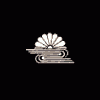I agree with that. Usually, here are two leagues: kinkô (金工) and tankô (鐔工), whereas Ko-Kinkô, Umetada, Kyô, Daigorô, Kyô-Shôami,
Higo, various Shôami from other provinces, and of course Ko-Shôami and Shôami are classified to the first group.
The second group is made-up of Kanayama, Owari, Akasaka, Nobuie, Yamakichibei, Hôan, Yagyû, Tochibata, Ko-Tôshô and Tôshô,
Ko-Katchûshi, Myôchin, Saotome, Ônin-zôgan, Heianjô-zôgan, Yoshirô-zôgan, Kamakura and the like.


